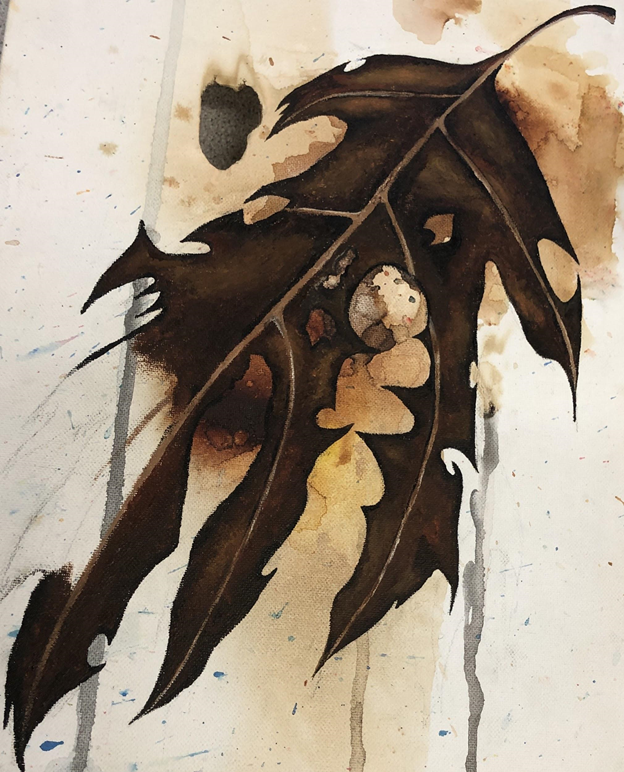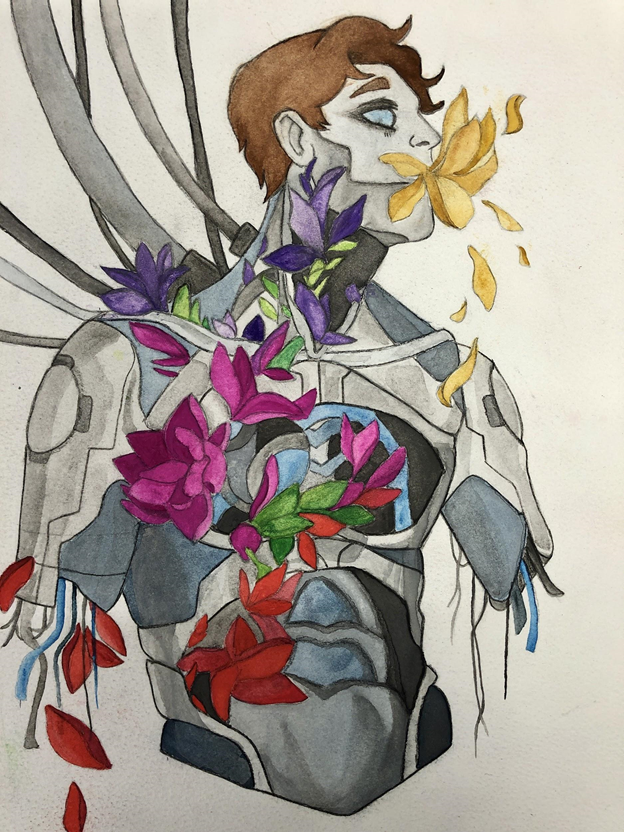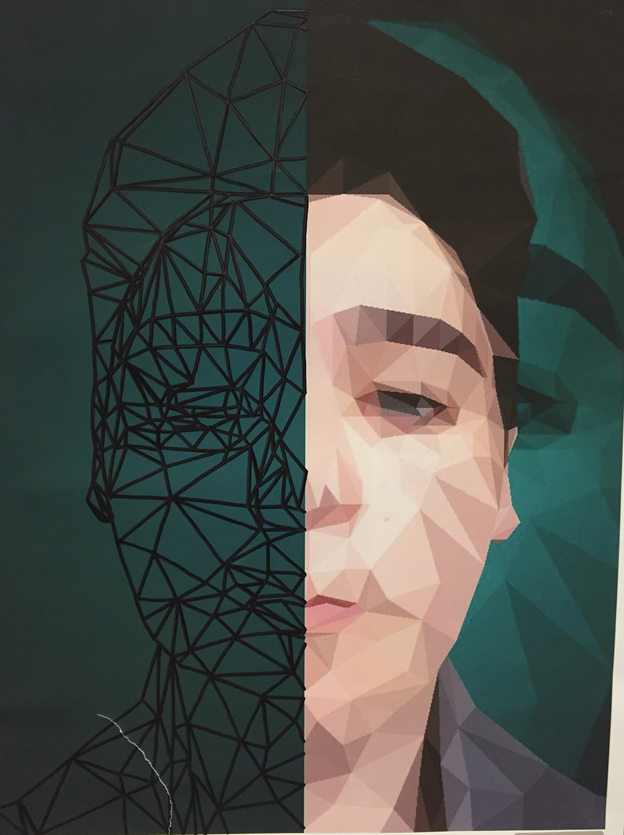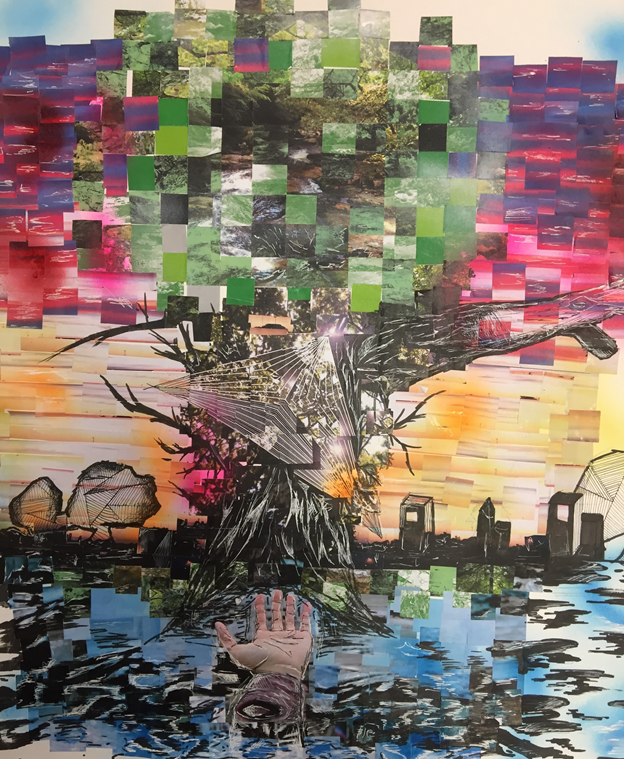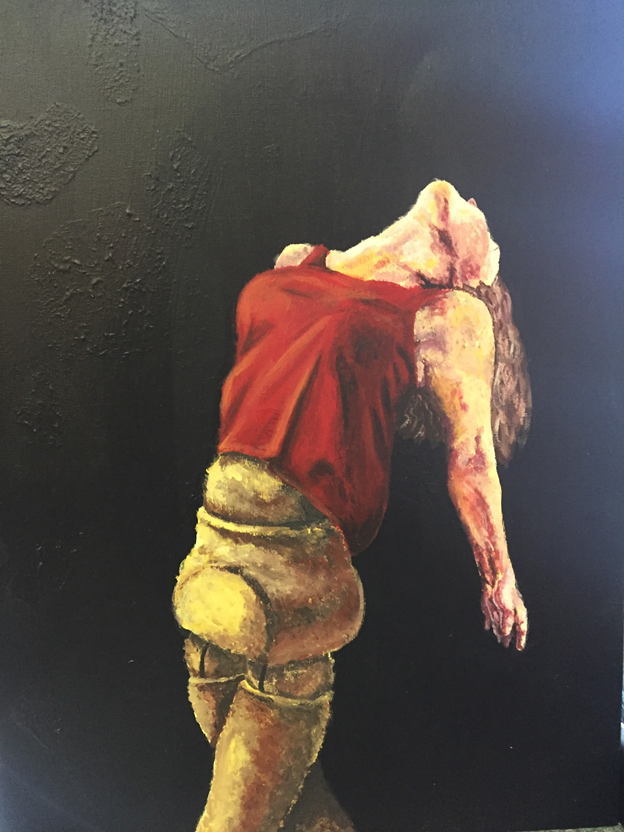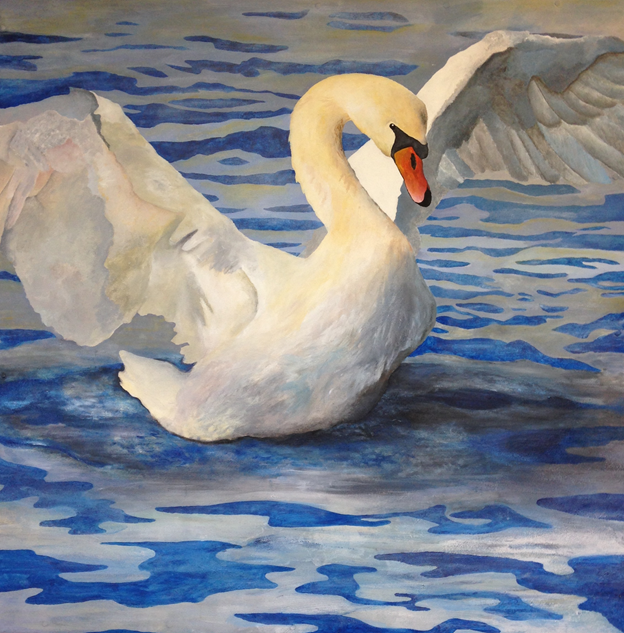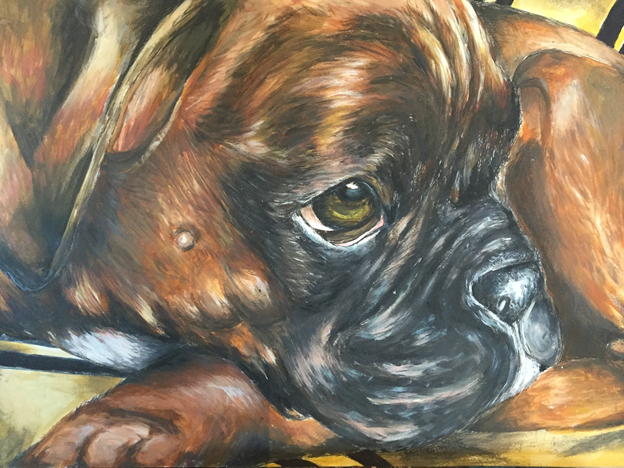Art & Design
It is understood that Art & Design has the potential to develop creativity, self-confidence, problem solving, communication and many other facets of human nature that are important in our daily lives. We recognise that all students are capable of original thought and we seek to encourage the expression of these thoughts and feelings through the development of artistic skills.
The process of enquiry, research and discussion is as important as the final outcome, whether that is a painting, sculpture, photograph or a clay pot. Creative thought and the ability to appreciate human endeavour is essential to all students, regardless of what paths they follow after leaving school. We address notions of multiculturalism into our teaching and learning and do not exclude any subject area from artistic investigation. Art can be a very powerful way of exploring the diversity of the world as well as a way of enhancing an individual personal, cultural enlightenment. Our examination success rate continues to be maintained at levels well above the national average in both GCSE and A Level. Students often move on to successful higher and further education routes that lead to art-based careers in marketing, graphics, media, photography and fine art.
We encourage students to attend weekend extra-curricular opportunities at Plymouth College of Art and elsewhere, as well as making the Art studios available during lunch breaks and after school. Trips to primary resources such as the Eden Project, St Ives and London galleries are a regular occurrence. Artists in residence and workshops are other features of the curriculum.
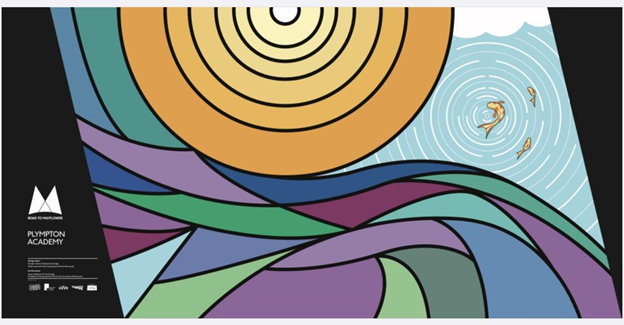
Student Statements
“The teachers are approachable and allow us to think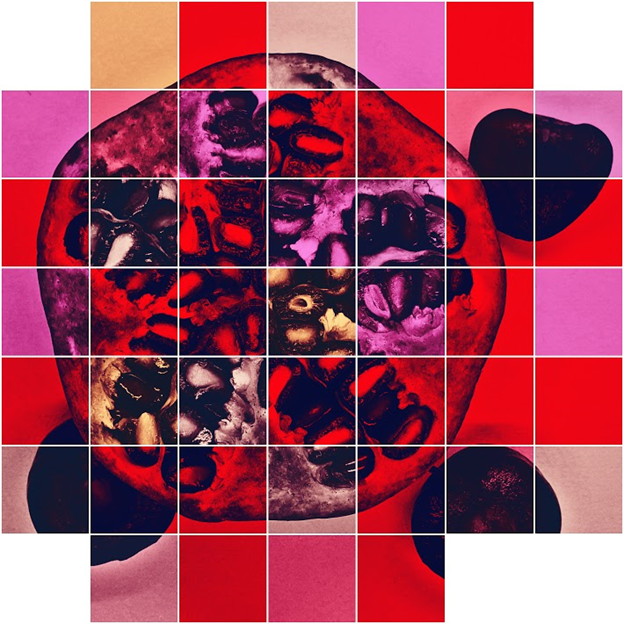 of our own ideas and designs. They give us freedom whilst still helping us to develop.”
of our own ideas and designs. They give us freedom whilst still helping us to develop.”
“Art gives you the opportunity to develop your ideas in a creative and individual way. We are given regular feedback that helps us to improve and gain a better understanding.”
“The course is very hands-on and we are always being taught the key techniques in a very practical way.”
“I thoroughly enjoy my AS Photography lessons. I feel I am gaining in confidence and competence as the course progresses and would like to thank my teachers for their support.”
“The subject is practical and creative and is a great way to spend the week. The practical and hands on feel to the subject makes it enjoyable and entertaining.”
Year 7
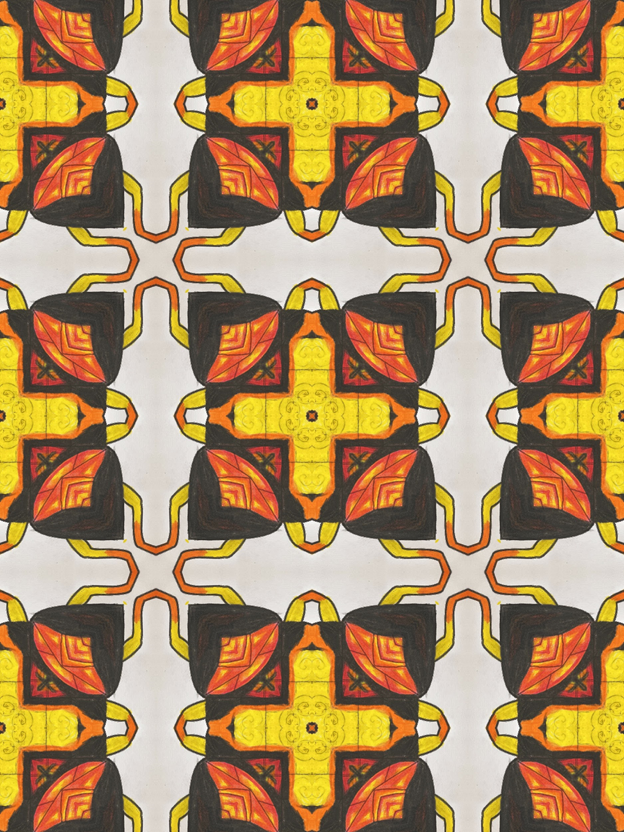 This year is a fantastic and exciting introduction to Art and Design. Students will have the opportunity to work with a range of media, techniques and processes. They will investigate the formal elements of line, tone, colour, shape, space, form, pattern and texture via exciting and creative projects. They will work independently and in groups. Students will explore and develop their ideas using a sketchbook and they will have the opportunity to work with a range of materials. Teachers develop schemes of learning (projects) under the three main Year 7 themes:
This year is a fantastic and exciting introduction to Art and Design. Students will have the opportunity to work with a range of media, techniques and processes. They will investigate the formal elements of line, tone, colour, shape, space, form, pattern and texture via exciting and creative projects. They will work independently and in groups. Students will explore and develop their ideas using a sketchbook and they will have the opportunity to work with a range of materials. Teachers develop schemes of learning (projects) under the three main Year 7 themes:
1. An Introduction to Art and Design
2. Chromatic Insects
3. Human Habitats
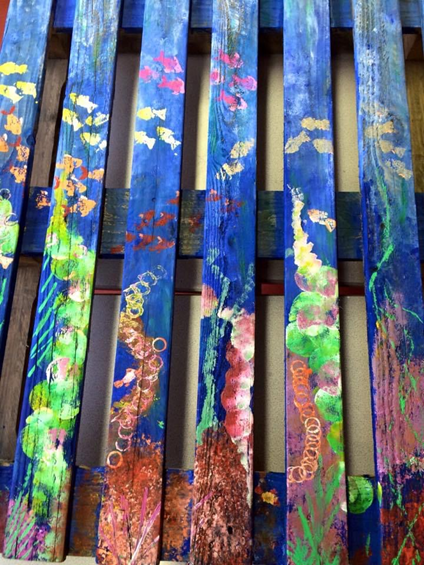
Every year we adapt and update projects and introduce new and exciting additions. Students are taught important drawing and painting skills, colour theory and research skills in Year 7. They are also taught to appreciate the work of others and how to develop their own ideas.
During each project, teachers will be assessing six main areas:
Understanding / Ideas / Making / Analysis / Development / Evaluating
Students will be assessed against their Minimum Expected Grade (MEG) twice a year. Assessment will also take place during projects in the form of teacher comments with tips about how to improve and make further progress. Students will be involved with peer and self assessments.
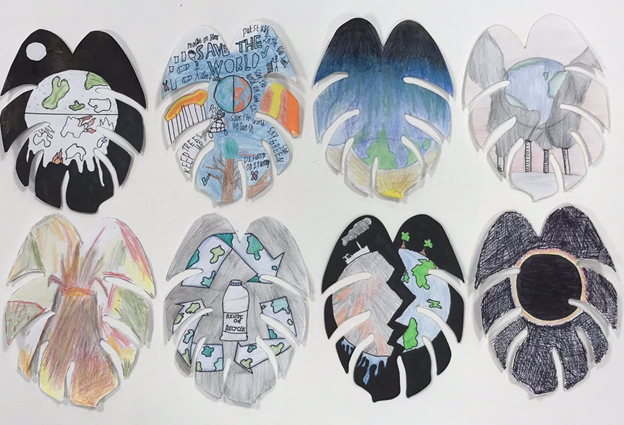
Year 8
During Year 8 we aim to build on the foundations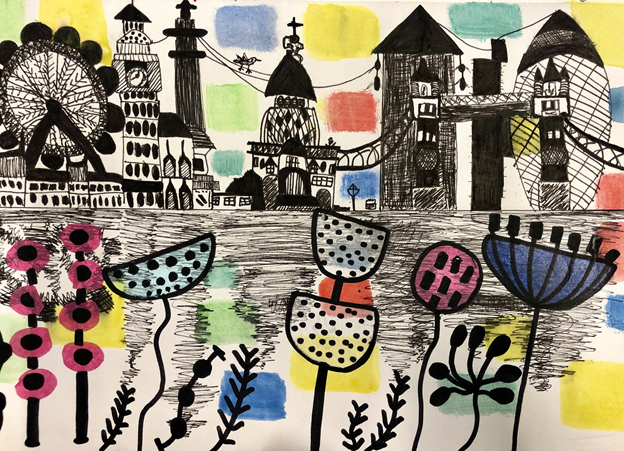 laid in Year 7. Students now begin to develop confidence and they learn to record from first-hand observation, experience and imagination with skill. Students are taught to adapt and refine their own work as it progresses. They will continue to examine the work of other artists, crafts people and designers for inspiration. Students learn how codes and conventions are used to convey ideas and meanings in a range of cultures. They also look back at art from different times throughout history to learn from the past and understand context. Using the imagination is also a key theme of Year 8 and many students find this area of the art curriculum exciting and liberating. Teachers develop schemes of learning (projects) under the three main Year 8 themes:
laid in Year 7. Students now begin to develop confidence and they learn to record from first-hand observation, experience and imagination with skill. Students are taught to adapt and refine their own work as it progresses. They will continue to examine the work of other artists, crafts people and designers for inspiration. Students learn how codes and conventions are used to convey ideas and meanings in a range of cultures. They also look back at art from different times throughout history to learn from the past and understand context. Using the imagination is also a key theme of Year 8 and many students find this area of the art curriculum exciting and liberating. Teachers develop schemes of learning (projects) under the three main Year 8 themes:
1. Moor to Shore
2. Figures in Action
3. Culture Clash
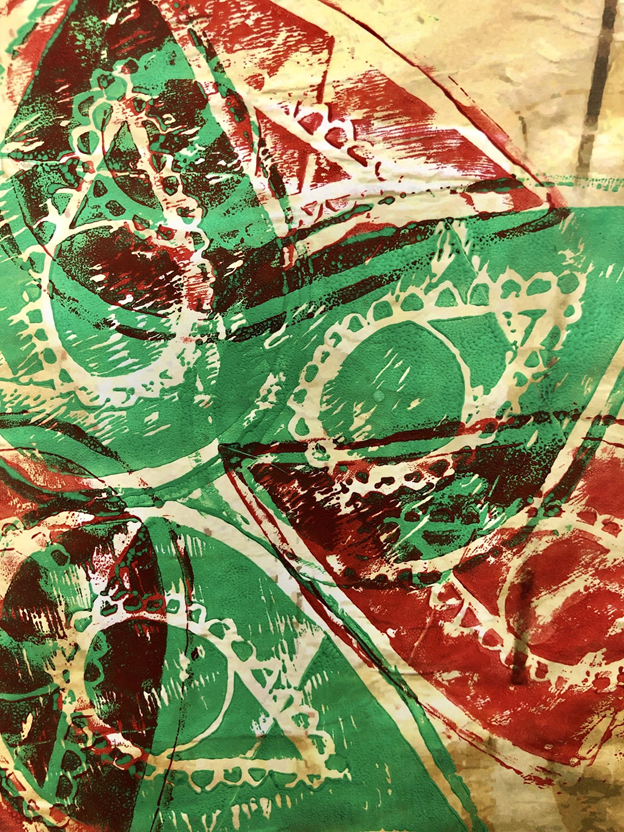 We are constantly seeking to develop new and exciting projects to inspire and engage our students. Every year we adapt and update projects and introduce new and exciting additions.
We are constantly seeking to develop new and exciting projects to inspire and engage our students. Every year we adapt and update projects and introduce new and exciting additions.
During each project, teachers will be assessing six main areas:
Understanding / Ideas / Making / Analysis / Development / Evaluating
Students will be assessed against their Minimum Expected Grade (MEG) twice a year. Assessment will also take place during projects in the form of teacher comments with tips about how to improve and make further progress. Students will be involved with peer and self assessments.
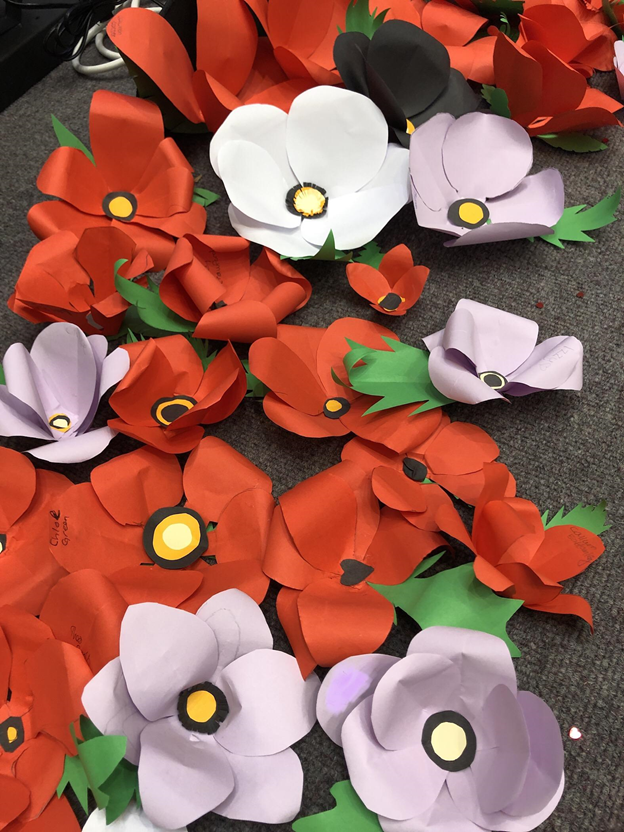
Year 9
Throughout Year 9, we teach students how to express and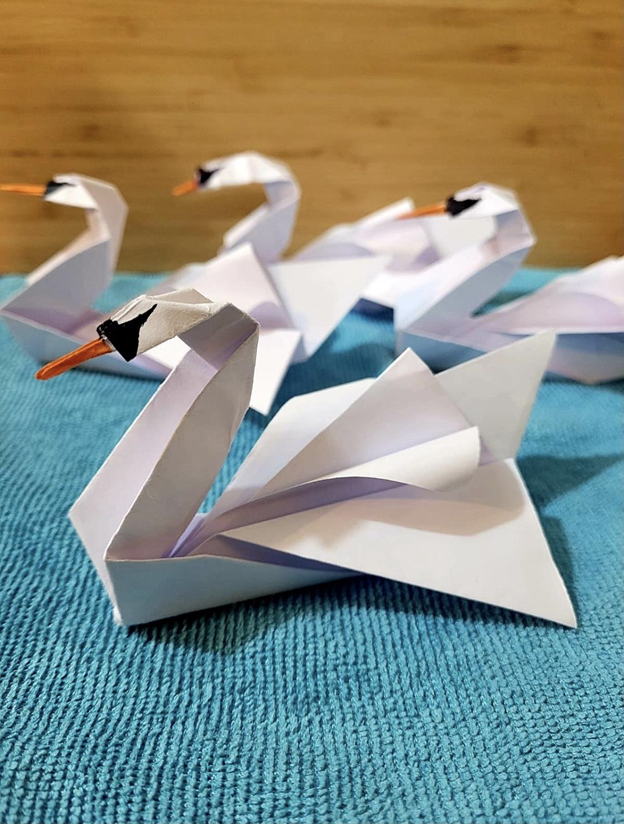 communicate ideas and feelings through their creative studies. This is a preparation year for the GCSE course. Students are taught about reflecting on and evaluating their own and others’ work and they learn how to analyse and make critical judgements. Students begin to make much more personal responses to projects and no two outcomes will be alike. They are taught more advanced skills such as drawing in perspective, mark making, using Photoshop on the computer and working with clay. Teachers develop schemes of learning (projects) under the three main Year 9 themes:
communicate ideas and feelings through their creative studies. This is a preparation year for the GCSE course. Students are taught about reflecting on and evaluating their own and others’ work and they learn how to analyse and make critical judgements. Students begin to make much more personal responses to projects and no two outcomes will be alike. They are taught more advanced skills such as drawing in perspective, mark making, using Photoshop on the computer and working with clay. Teachers develop schemes of learning (projects) under the three main Year 9 themes:
1. Childhood Memories
2. Birds with Issues
3. Portraiture and Identity
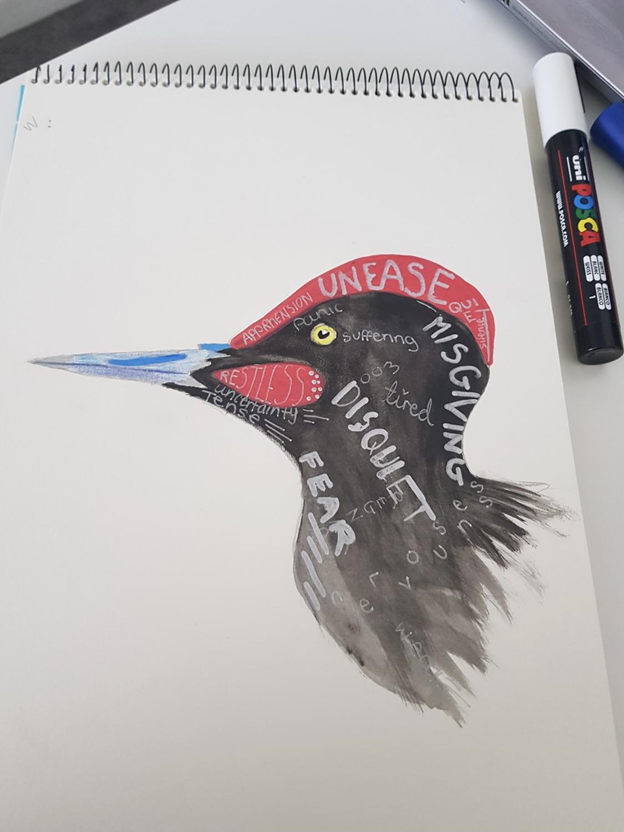 We are constantly seeking to develop new and exciting projects to inspire and engage our students. Every year we adapt and update projects and introduce new and exciting additions.
We are constantly seeking to develop new and exciting projects to inspire and engage our students. Every year we adapt and update projects and introduce new and exciting additions.
During each project, teachers will be assessing six main areas:
Understanding / Ideas / Making / Analysis / Development / Evaluating
Students will be assessed against their Minimum Expected Grade (MEG) twice a year. Assessment will also take place during projects in the form of teacher comments with tips about how to improve and make further progress. Students will be involved with peer and self assessments.
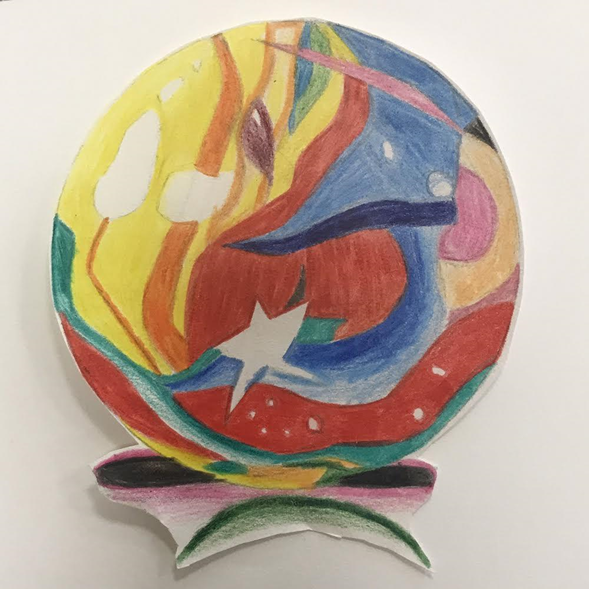
Year 10 and 11
Description of the course
This fast paced and engaging course provides students with a wide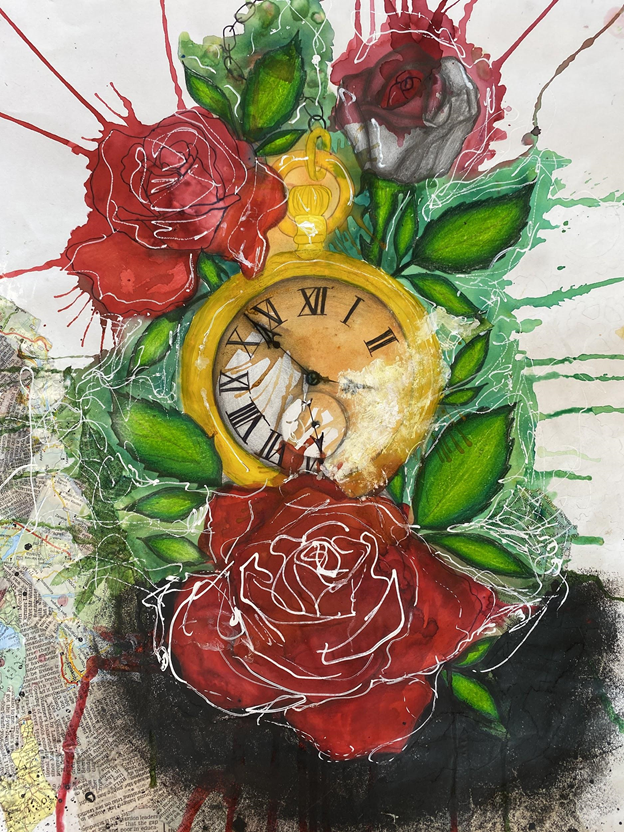 range of creative, exciting and stimulating opportunities to explore their interests in ways that are both personally relevant and developmental in nature. This two unit specification enables students to develop their ability to actively engage in the processes of Art and Design. Teachers design projects that help students build creative skills through learning and doing. We encourage students to develop imaginative and intuitive ways of working. They gain knowledge and understanding of media, materials and technologies in historical and contemporary contexts, societies and cultures. Students will work across a range of disciplines including, painting, drawing, printing, ICT, photography, 3D and textiles. They will have the opportunity to work with clay, wire, collage, pastels, chalks, charcoal and alternative materials such as wax and plaster.
range of creative, exciting and stimulating opportunities to explore their interests in ways that are both personally relevant and developmental in nature. This two unit specification enables students to develop their ability to actively engage in the processes of Art and Design. Teachers design projects that help students build creative skills through learning and doing. We encourage students to develop imaginative and intuitive ways of working. They gain knowledge and understanding of media, materials and technologies in historical and contemporary contexts, societies and cultures. Students will work across a range of disciplines including, painting, drawing, printing, ICT, photography, 3D and textiles. They will have the opportunity to work with clay, wire, collage, pastels, chalks, charcoal and alternative materials such as wax and plaster.
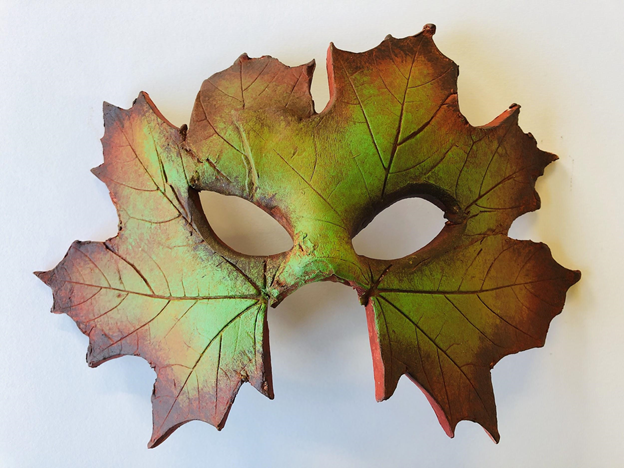 Students look at the work of other artists and craftspeople to inspire them and document their thoughts, experiments, designs and outcomes in their sketchbooks and on A1 sheets. Students will have the chance to work independently and collaboratively. Educational visits are an important part of the course and past trips have been to the Eden Project, Plymouth Aquarium, Plymouth Museum & Gallery and TR2. Students will get the opportunity to work with professional artists during one day workshops and in lessons. This is a popular course, with a history of excellent results here at
Students look at the work of other artists and craftspeople to inspire them and document their thoughts, experiments, designs and outcomes in their sketchbooks and on A1 sheets. Students will have the chance to work independently and collaboratively. Educational visits are an important part of the course and past trips have been to the Eden Project, Plymouth Aquarium, Plymouth Museum & Gallery and TR2. Students will get the opportunity to work with professional artists during one day workshops and in lessons. This is a popular course, with a history of excellent results here at 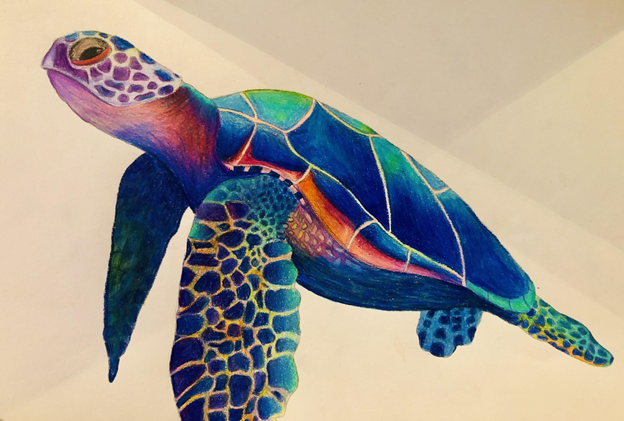 Plympton Academy. We look forward to welcoming the next generation of creative individuals!
Plympton Academy. We look forward to welcoming the next generation of creative individuals!
Assessment Procedure
This course is a strong foundation for further progression to Art and Design related courses and careers.
60% Unit One – Portfolio of Work - Mechanic Organic and Surreal Shoes
40% Unit Two – Externally Set Task - Choice of 7 starting points
Grade 1 - 9 GCSE Art & Design
Portfolio of Work: Students must submit a folder containing at least two major projects (set by their teacher). They will use a variety of materials and techniques. They will need to demonstrate their knowledge, skills and understanding.
Some examples of past projects are: Mechanic Organic, Portraiture and Identity, Coast, Plymouth, Human Activity, Expression and Emotion, Surreal Shoes, Journeys and The Art of Science.
Externally Set Task: Students are given a list of starting points. They choose one and then over a period of 12 weeks they produce a personal artistic response, showing development of their ideas. They then complete a final outcome during a 10 hour examination held over two days.
Students can follow many interesting pathways after completing a GCSE Art and Design course such as; Fine Art, Illustration, Architecture, 3D Design, Art History, Advertising, Teaching, Publishing, Animation, Product Design, Web Design, Art Therapy, Printing.
|
|
|
|
Sixth Form: Fine Art
Course Content
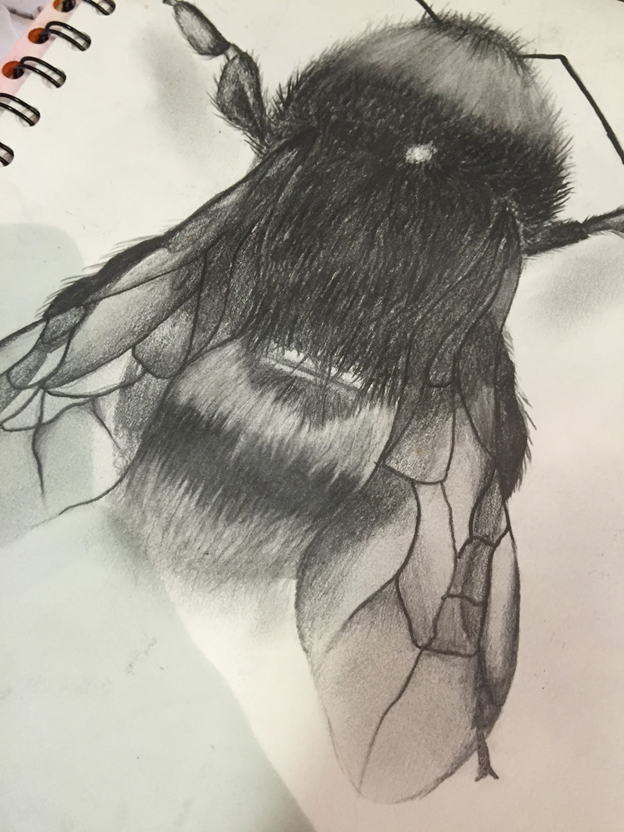 Art is a ‘universal subject’ and by its nature provides an opportunity to research many aspects of human thought and endeavour. You will look at the natural world as well as mankind’s activities within it. By experimenting with materials and techniques you will develop your own creative way of expressing personal feelings and perceptions. You will research and interpret the unique work of professional artists and designers and in doing so will broaden your knowledge and understanding of yourself and the world. Nothing needs to be excluded, the choice is yours. A developing confidence will enable you to make your own individual mark.
Art is a ‘universal subject’ and by its nature provides an opportunity to research many aspects of human thought and endeavour. You will look at the natural world as well as mankind’s activities within it. By experimenting with materials and techniques you will develop your own creative way of expressing personal feelings and perceptions. You will research and interpret the unique work of professional artists and designers and in doing so will broaden your knowledge and understanding of yourself and the world. Nothing needs to be excluded, the choice is yours. A developing confidence will enable you to make your own individual mark.
Core Requirements
Grade 6 in GCSE Art and Design is preferred but if you did not take Art at GCSE level then a consultation with the Head of Department, Mrs Romanski, is needed before you submit your choices.
Assessment Information
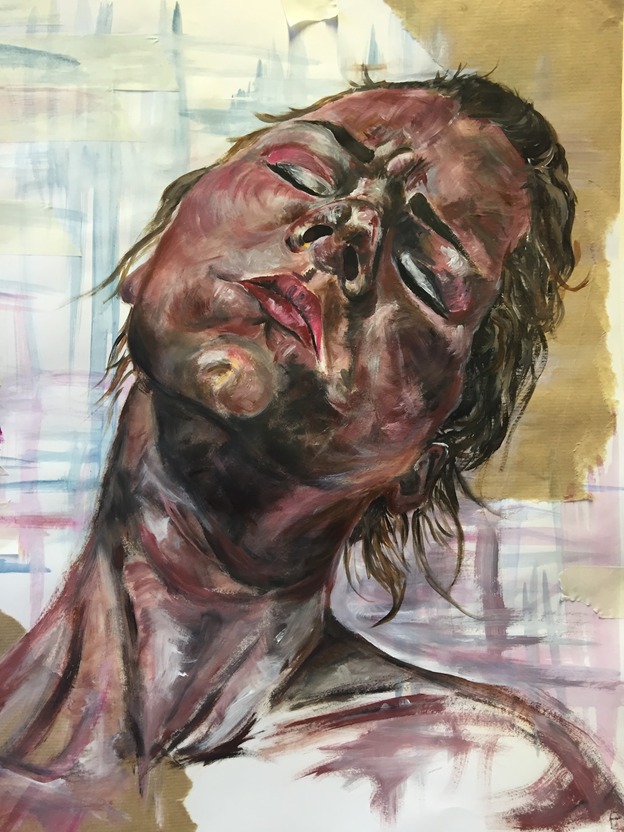 Continuous assessment is made by your teachers who will be working in partnership with you. They will give you practical advice and demonstrate skills in a way that will be easy and exciting to learn. You will be awarded grades for the standard of your ideas as well as your ability to use materials. You will gain an insight into the philosophy of selected artists and you will have an opportunity to discuss and write about your own opinions. The examination board sets a controlled test at the end of the year, the results of which are added to school assessment grades.
Continuous assessment is made by your teachers who will be working in partnership with you. They will give you practical advice and demonstrate skills in a way that will be easy and exciting to learn. You will be awarded grades for the standard of your ideas as well as your ability to use materials. You will gain an insight into the philosophy of selected artists and you will have an opportunity to discuss and write about your own opinions. The examination board sets a controlled test at the end of the year, the results of which are added to school assessment grades.
Student Statements
“Art is a great subject. It allows you to be creative and stretch yourself. You will be given the chance to try painting, sculpture, drawing and many other types of media. The course includes trips to a variety of galleries in both London and St Ives, giving you the chance to look at other artists’ work and learn about the history of Art. It allows you to experiment and let your personality shine through your work. Teacher support is always available when you need it and group work with other Art students inspires you and helps you appreciate pieces done by other people. Art is a unique subject because it is very individual and you are given a lot of freedom to try your own ideas.”
|
|
|
Career Options
The creative industries cover a wide variety of areas including: animation, advertising, computer games, craft, cultural heritage, design, digital media, interactive media, fine art, fashion, film, photo imaging, textiles and TV. When considering which direction you’d like to take your creative career, it’s important to explore the full range of creative opportunities that may be available to you.
Below are some examples of career pathways that Art and Design students may choose to take:
- Animation
- Applied arts
- Art education
- Computer games
- Fashion
- Film and TV
- Fine art
- Graphic design
- Illustration
- Interactive media and web design
- Interior design and spatial planning
- Photography
- Textiles
|
|
|
Meet The Staff
Mrs Maria Romanski – Head of Art and Design
Mrs Polly Turner – Art and Design teacher, Photography lead teacher
Miss Donna Hawkshaw – Art and Design and Photography Teacher
Mrs Natasha Edwards – Visual Arts Technician and Teaching Assistant


